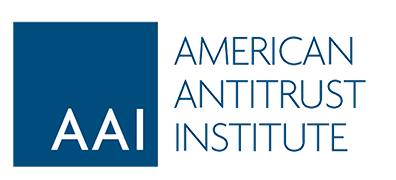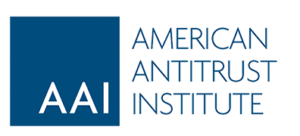The American Antitrust Institute (AAI) recently filed an amicus brief in Epic Games v. Apple encouraging the Ninth Circuit Court of Appeals to affirm a district court’s order modifying an injunction against Apple for violating California’s Unfair Competition Law (UCL).
In a 2021 order, Judge Yvonne Gonzalez Rogers ruled that Apple’s “anti-steering” policies preventing app developers from directing users to outside payment options violated the UCL. The court enjoined Apple from charging a supracompetitive 30% commission on all in-app purchases. Aided by an AAI amicus brief on the merits, the Ninth Circuit affirmed.
This April, after evidentiary hearings, the district court found that Apple’s response to the 2021 injunction—which included imposing a new 27% commission on out-of-app purchases and new restrictions designed to dissuade app customers from making purchases outside of the App Store—were in direct defiance of the injunction. The court held Apple in civil contempt and issued a new, modified injunction that prohibits Apple from impeding app developers’ communications with users and from charging any commission on out-of-app purchases. Apple appealed.
AAI’s amicus brief explains that Apple’s replacement practices achieved the same anticompetitive ends as its original practices, using the same economic mechanism. Rather than contractual provisions, it used pricing and design tactics to raise rivals’ costs by making it more difficult for users to discover and substitute to lower-cost sellers. Because such tactics can often achieve the same ends as contractual provisions, courts must be able to enjoin them to prevent end-runs around competition remedies.
Addressing Apple’s argument that its general expenditures developing and maintaining the App store entitle it to a commission on out-of-App purchases, AAI explained that a defendant’s procompetitive justifications for otherwise harmful conduct must be specific to that conduct, and that “ruinous competition” is not a cognizable defense.
In response to Apple’s argument that the court’s modified injunction violates its First Amendment rights by ordering it to stop limiting or refusing to display information from third Parties, AAI explained that First Amendment rights are not absolute. Antitrust and unfair competition remedies prohibiting certain kinds of speech are common and often necessary, particularly where, as here, a defendant refuses to permit certain communications that would have increased competition.
Finally, addressing Apple’s argument that the court cannot issue a new injunction without first adjudicating liability as to the newly enjoined conduct, AAI pointed to Supreme Court precedent holding that a court’s remedial powers extend well beyond the particular conduct found to be illegal at the liability stage. AAI argued that allowing antitrust defendants to relitigate liability at the remedy and compliance stages would considerably compound the administrative costs of antitrust litigation.
The brief was written by AAI Advisory Board member John M. Newman, who is Professor and Herbert Herff Chair of Excellence in Law at the University of Memphis Cecil C. Humphreys School of Law. AAI President Randy M. Stutz assisted.
Read the full amicus brief: AAI Amicus Brief in Epic Games v. Apple


